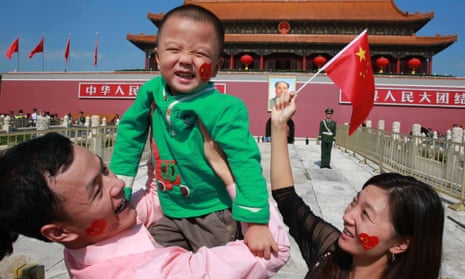Shares in Chinese companies that make and sell baby products have surged after a report said China is considering plans to scrap limits on the number of children a couple can have.
Companies like Shanghai Aiyingshi, which runs a chain of stores selling baby products, infant care device makers, and others saw their shares rise as much as 10% on Tuesday. China’s Shanghai Composite index rose 0.51 points to its highest close in more than a month.
On Monday, Bloomberg reported that China’s state council has commissioned research on the impacts of ending limits on the number of children families can have, citing anonymous sources familiar with government deliberations.
After almost 40 years of China’s “one-child” policy, which barred many families from having more than one child, the government loosened the policy in 2015 to allow all parents to have two offspring.
But three years later, China’s fertility rate remains one of the lowest in the world, at 1.24 births per woman, below the expected rate of 1.63. The number of births fell 4% from the year before.
The decision on whether to remove the limits could come as soon as this year or in 2019, and is an effort to counteract the rapid ageing of the country’s population and also to lessen global criticism of its family planning policies, according to Bloomberg.
China’s family planning policies, enacted in the 1970s, have been criticised for causing millions of forced abortions, sterilisations, and heavy fines placed on families. Critics have called it one of the most extreme examples of state intervention in human reproduction in modern history.
“So many issues have come up. They have to [abandon the limits]. The Chinese government has no choice,” said Yi Fuxian, a longtime critic of the limits, and senior scientist at the University of Wisconsin’s School of Medicine and Public Health.
China also faces a shrinking labour force and social welfare system to support its ageing population, who have traditionally depended on their children to care for them in their old age. Limits on children have also given rise to a massive gender imbalance: China has roughly 30 million more men than women.
Gradual steps have been made towards abolishing the system. In a government reshuffle in March, the family planning commission, responsible for enforcing these limits, was subsumed into a larger health commission. The term “family planning” disappeared from the organisation’s name as well as most recent policy reports.
Getting rid of limits on families may still not be enough. Yi said the government needs to address the issues discouraging couples from having more children: expensive housing, the cost of education, and a lack of government-supported maternity leave so that companies don’t discriminate against women.
“Even if China stops the policy, the fertility rate is very hard to increase because the economy, the social environment, education, everything is based on the one-child policy. People get used to it. Changing the policy is not enough.”
